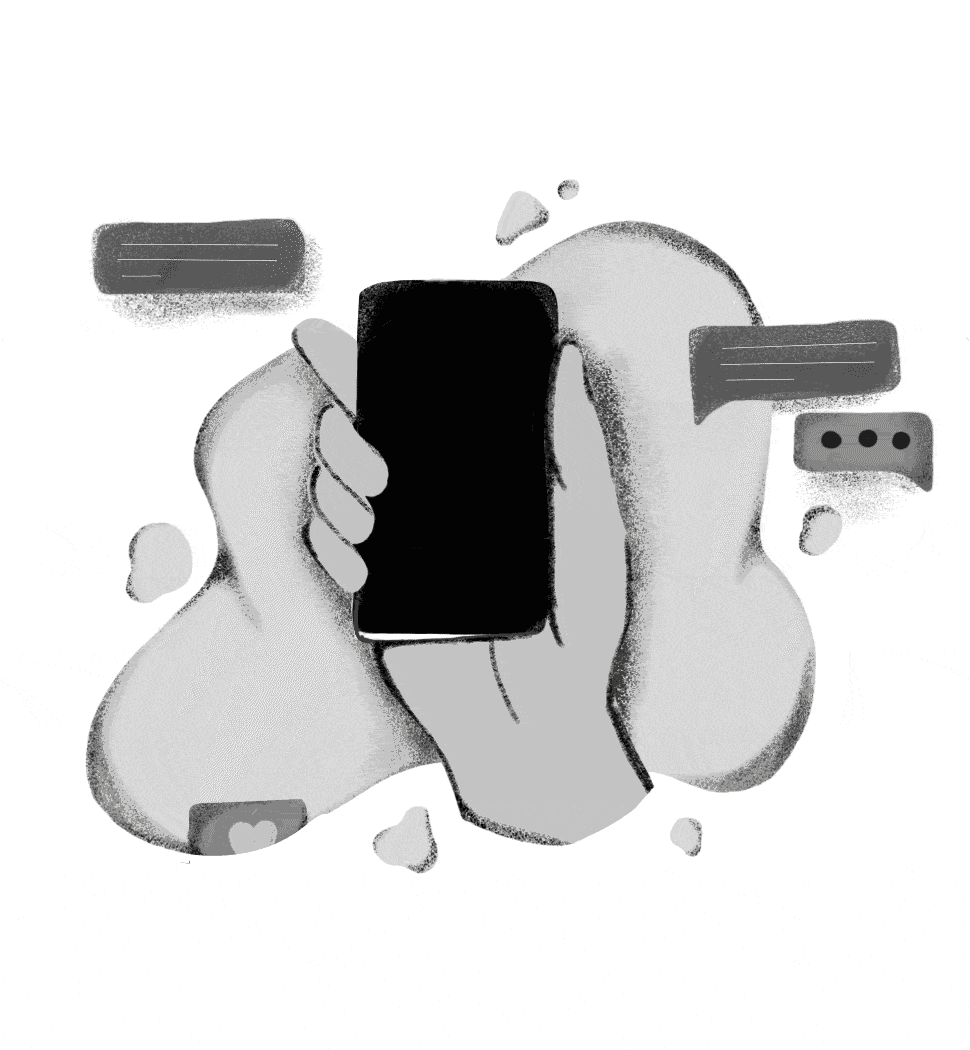Addicted to iPhones and Social Media

Social media and iPhones have become so prevalent in society that humans are mentally and physically addicted to their smartphones. You may be thinking (in denial), “How?”
Designers use “persuasive design” when creating social media apps, a concept that harnesses the little bits of your brain that are responsible for forming habits and addictions.
For example, the “dot dot dot” you get when someone is responding to a text is persuasive design—it keeps you hooked to that page, waiting for your reward (a response).
This is also similar to the red notifications at the top of all your apps. They’re red because you’ve been taught that red means “stop, alert, or fix” and therefore naturally have an urge to engage with the app to check them. This goes for streaks, the concept of “swiping”, and even the vibrate length or the sound of an alert when you get a notification. These symbols and design elements are all over your iPhone and in the apps you use every day.
Social media triggers a dopamine high—seriously. Your body actually releases dopamine when you receive likes and further social media engagement. So in essence, social media affects the brain in the same way that a hug does.
It’s crazy to think that our bodies are mentally and physically addicted to our iPhones due to all of its design features and engaging symbols. There are many questions that arise when thinking about social media, and we all wonder whether or not it has enhanced our world or if it has made it more complex and complicated, for the worse.
I wanted to get the thoughts of a social media professional to gain an expert perspective, so I asked our Social Media Supervisor, Nikki Bracy for her thoughts on the topic:
Social media is a tool of communication, bringing individuals and our community closer to one another. Although with social media, there is a significant amount of content that can be extremely misleading, which can become problematic. Typically, social media is a place where people show their life highlights and positive content, which sometimes urges followers to reanalyze their value and overall self-worth. It’s rare for people to show their struggles on social media and/or negative content, but recently the rise in popularity of people expressing this side of them is increasing, allowing people to realize that they’re not alone, thus expanding the social community and making the community stronger.
Social media is a space where the world can quickly get relevant and timely information. It is an area that allows marketers to have 1:1 conversations with their target audience and receive constructive feedback. But it also is a place where misinformation can spread quickly, increasing crisis and fake news. As much as we think we have control of our social media channels, it can take one second for things to get out of hand. But, that’s why we have social media analysts and public relations professionals: to control crises from the start and end them quickly.
In a wrap, Nikki believes that social media is a communication resource that we all have come to know and use. There are, as you can imagine, many challenges and struggles that follow, but ultimately, it brings our world together and makes us stronger!
Circling back to the addictive aspects of social media: we are humans and we function off of social conditioning and symbols because that’s how we function best. We are drawn toward symbols, and we now know how to respond quickly when we see symbols. For example, when people see a red octagon we know to stop, or when we see a yellow circle hanging in the road we know to slow down. These symbols appear everywhere in our world and we know how to properly react to them. Have you ever thought about social media as being an online version of reality? Well, it is! Social media has been created and designed with the use of symbols because designers know we function and relate best with them.